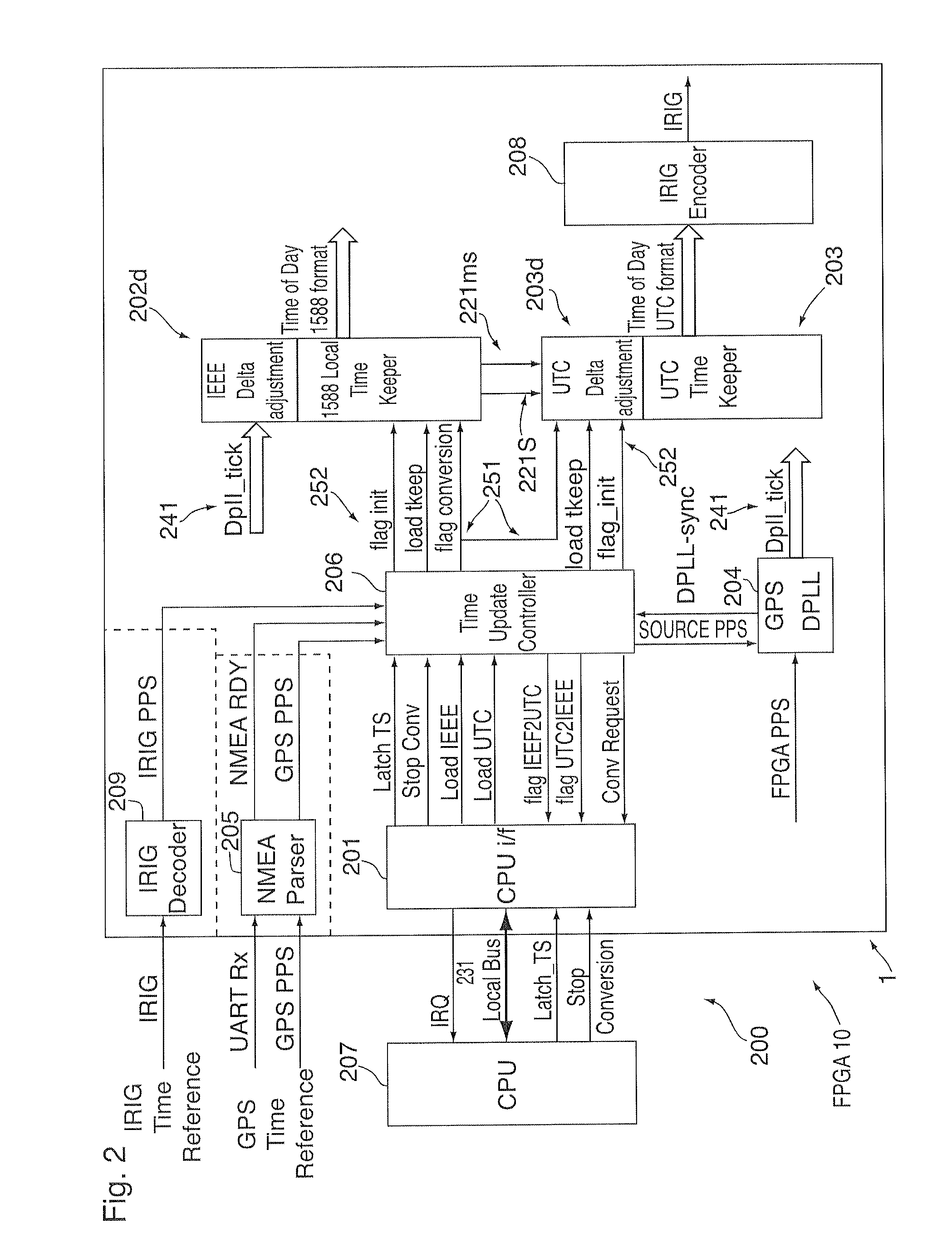Time format conversion method, device and system
a time format and conversion method technology, applied in the field of time format conversion methods, devices and systems, can solve the problems of processing latency, processor performance may not be as desired, and processors may be performing other tasks, so as to reduce the conversion degradation of cpu processing latency, accurate conversion, and better account for processing latency during a time conversion
- Summary
- Abstract
- Description
- Claims
- Application Information
AI Technical Summary
Benefits of technology
Problems solved by technology
Method used
Image
Examples
Embodiment Construction
[0030]Preferred embodiments of the invention and its advantages can be understood by referring to the present drawings. In the present drawings, like numerals are used for like and corresponding parts of the accompanying drawings.
[0031]As shown in FIG. 2, one embodiment of the present invention relates to a device for facilitating time format conversion, shown generally by reference numeral 200, which may be located in a local unit, shown generally by reference numeral 1. The local unit 1 can be any type of unit that has a processor 207 and can be connected to an overall network as shown generally by reference numeral 800 in FIG. 8. In the embodiment illustrated in FIG. 2, the local unit 1 comprises a field programmable gate array (FPGA) 10. The device 200 may also be located in a control module (CM) 102 or line module (NM) 103 as illustrated for instance in FIG. 1 or any other type of module. As also illustrated in FIG. 1, the central module 102 and line modules 103 also comprise a...
PUM
 Login to View More
Login to View More Abstract
Description
Claims
Application Information
 Login to View More
Login to View More - R&D
- Intellectual Property
- Life Sciences
- Materials
- Tech Scout
- Unparalleled Data Quality
- Higher Quality Content
- 60% Fewer Hallucinations
Browse by: Latest US Patents, China's latest patents, Technical Efficacy Thesaurus, Application Domain, Technology Topic, Popular Technical Reports.
© 2025 PatSnap. All rights reserved.Legal|Privacy policy|Modern Slavery Act Transparency Statement|Sitemap|About US| Contact US: help@patsnap.com



